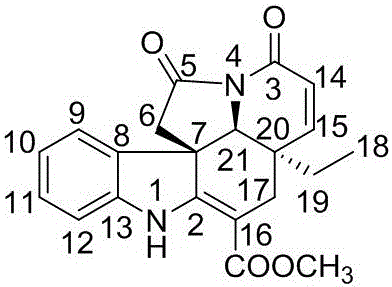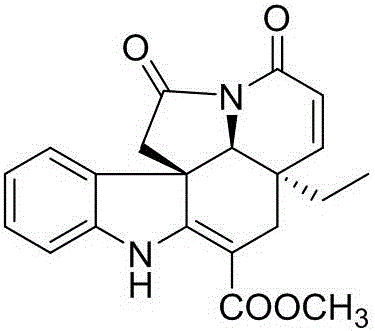Process for printing and dyeing textiles
An antibacterial textile, printing and dyeing technology, applied in the field of printing and dyeing, to achieve the effects of wide range of uses, good color fastness and low production cost
- Summary
- Abstract
- Description
- Claims
- Application Information
AI Technical Summary
Problems solved by technology
Method used
Image
Examples
Embodiment 1
[0028] An antibacterial textile printing and dyeing process, the specific method steps are as follows:
[0029] 1) Bleaching: Dip the textile into the bleaching solution and wash and bleach it;
[0030] 2) Dyeing: heat up to 70°C at a rate of 2.5°C / min, keep warm for 3-10 minutes; then continue to heat up to 100°C at a rate of 1.5°C / min, keep warm for 5 minutes; then continue to heat up to 120°C at a rate of 1.5°C / min ℃, keep warm for 25 minutes; finally cool down to 60 ℃ at a rate of 2.5 ℃ / min, keep warm for 5 minutes, and the dyeing is completed;
[0031] 3) Antibacterial finishing: dip the dyed blended fabric into the turnip extract solution at room temperature for 15 minutes, and then dehydrate, wherein the concentration of the turnip extract aqueous solution is 35g / L;
[0032] 4) Drying: Put the antibacterially finished blended fabric into the dryer to dry.
[0033] In the step 3), the preparation method of turnip extract is as follows: (a) crush the dry root (8kg) of t...
Embodiment 2
[0036] An antibacterial textile printing and dyeing process, the specific method steps are as follows:
[0037] 1) Bleaching: Dip the textile into the bleaching solution and wash and bleach it;
[0038] 2) Dyeing: heat up to 75°C at a rate of 2.5°C / min and hold for 3 minutes; then continue to heat up to 100°C at a rate of 1.5°C / min and hold for 5 minutes; then continue to heat up to 120°C at a rate of 1.5°C / min. Keep warm for 40 minutes; finally cool down to 60°C at a rate of 2.5°C / min, keep warm for 10 minutes, and the dyeing is completed;
[0039] 3) Antibacterial finishing: dip the dyed blended fabric into the turnip extract solution at room temperature for 55 minutes, and then dehydrate, wherein the concentration of the turnip extract aqueous solution is 5g / L;
[0040] 4) Drying: Put the antibacterially finished blended fabric into the dryer to dry.
[0041] Preferably, in the step 3), the preparation method of the turnip extract is the same as that in Example 1.
Embodiment 3
[0043] An antibacterial textile printing and dyeing process, the specific method steps are as follows:
[0044] 1) Bleaching: Dip the textile into the bleaching solution and wash and bleach it;
[0045] 2) Dyeing: heat up to 72°C at a rate of 2.5°C / min and hold for 5 minutes; then continue to heat up to 100°C at a rate of 1.5°C / min and hold for 5 minutes; then continue to heat up to 120°C at a rate of 1.5°C / min. Keep warm for 30 minutes; finally cool down to 60°C at a rate of 2.5°C / min, keep warm for 6 minutes, and the dyeing is completed;
[0046] 3) Antibacterial finishing: dip the dyed blended fabric into the turnip extract solution at room temperature for 20 minutes, and then dehydrate, wherein the concentration of the turnip extract aqueous solution is 15g / L;
[0047] 4) Drying: Put the antibacterially finished blended fabric into the dryer to dry.
[0048] Preferably, in the step 3), the preparation method of the turnip extract is the same as that in Example 1.
PUM
 Login to View More
Login to View More Abstract
Description
Claims
Application Information
 Login to View More
Login to View More - R&D
- Intellectual Property
- Life Sciences
- Materials
- Tech Scout
- Unparalleled Data Quality
- Higher Quality Content
- 60% Fewer Hallucinations
Browse by: Latest US Patents, China's latest patents, Technical Efficacy Thesaurus, Application Domain, Technology Topic, Popular Technical Reports.
© 2025 PatSnap. All rights reserved.Legal|Privacy policy|Modern Slavery Act Transparency Statement|Sitemap|About US| Contact US: help@patsnap.com



